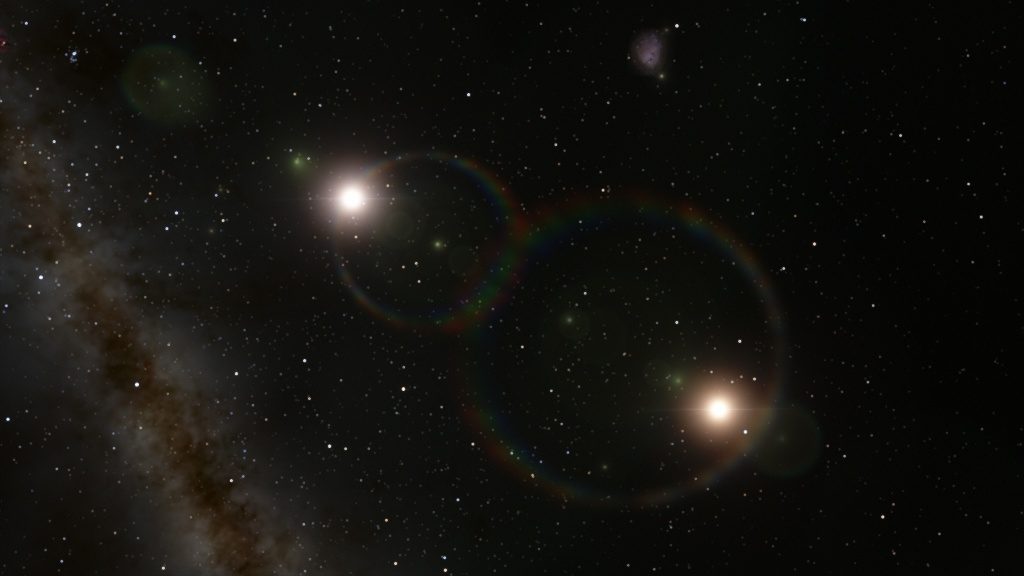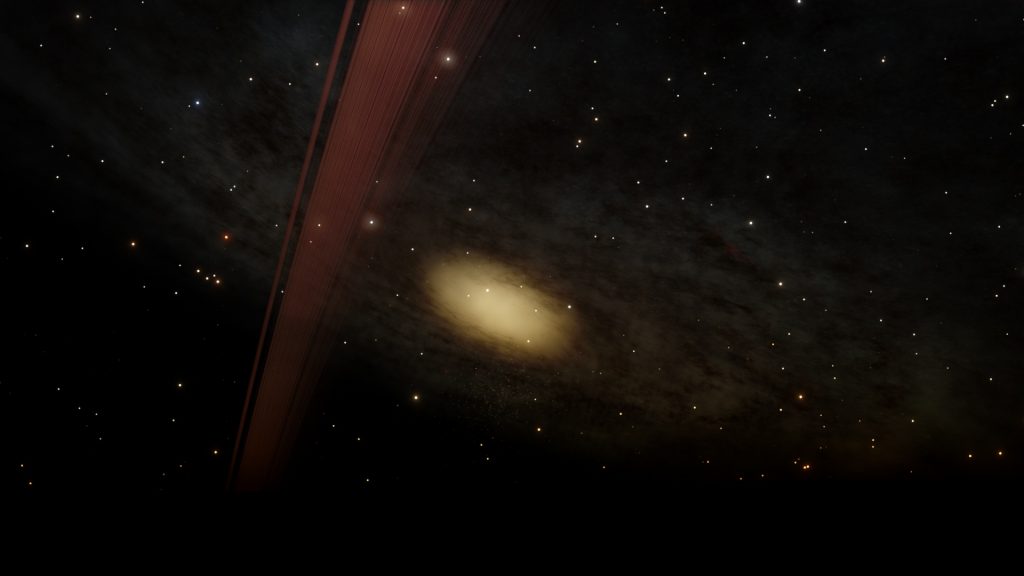Some months ago I came across Celestia, a 3D visualisation program of the known universe. It really helped me understand the positioning of things in outer space (I now have a good idea of where the Andromeda galaxy is amongst other things) and I soon feel in love with it.
There were some minor problems, like the database being a bit outdated, some searching problems, lack of nebulae, and others that weren’t bad enough to make the program not worth using.
But a bit more than a week ago, I found SpaceEngine which has none of those problems as well as many other nice features. It also includes the universally-accepted indicator of objective quality: lens flares.

That’s Alpha Centauri, by the way. You can also see a very nice-looking Milky Way running along the left, and the Small Magellanic Cloud a bit right from the top.
Of course, SpaceEngine’s nice graphics don’t come without less generous minimum requirements. I already have a fairly decent GPU (not amazing, but adequate) so I don’t know how well it performs without dedicated hardware. You can always check the minimum specs.
As you explore around, you’ll probably be surprised at some of the attention that’s gone into the program: gravitational lensing around black holes as well as accretion disks around the supermassive ones at the centres of galaxies and clusters, a lumpy surface of huge stars like Betelgeuse, visible individual particles in planetary rings, aurorae around poles and many other minor things that really add up.

One feature that I wasn’t too fond of at first but have grown to like is procedural generation of unknown objects. Get too far from the sun and the program will generate new, unique and realistic stars. Get away from the milky way and there’ll be entire generated galaxies of generated stars orbited by generated planets with generated terrain. It also helpfully prefixes these objects’ identifiers with “R” (e.g. a star I just went to is called RS 8474-914-5-25797-16). It’s so good that the terrain on those planets is more detailed than that of Earth in the simulator.

You can even define your own objects; the above screenshot is taken from a temperate planet I defined with a thick atmosphere. I just specified some things like the size of orbits, masses, etc. (most of which came from a simulation I have in Universe Sandbox), but the entire terrain was procedurally generated.
It also has some very nice music that plays in the background, I for one really like Flying Through the Universe. Keep getting it stuck in my head. Hot tip: if you install the program at C:\SpaceEngine, the music is at C:\SpaceEngine\data\music.
Basically, SpaceEngine is a fantastic visualisation of the universe, and if that at all interests you I highly recommend you download it.
No comments found.